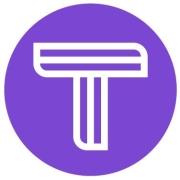Passwordless Authentication enhances security by eliminating the need for traditional passwords, which are prone to breaches and easy to forget.
Passwordless Authentication involves methods such as biometrics, hardware tokens, and email or SMS-based authentication. These techniques not only make login processes smoother but also significantly reduce the risk of phishing and credential stuffing attacks. Users have reported greater convenience and decreased identity theft incidents.
What are the main features of Passwordless Authentication?In healthcare, implementation of Passwordless Authentication can ensure that only authorized personnel access sensitive patient data. Financial institutions benefit from using hardware tokens and biometrics to protect high-value transactions and customer accounts.
Organizations benefit from Passwordless Authentication by enhancing security, improving user experience, and reducing costs, thus making it a valuable solution for modern digital environments.





















Passwordless Authentication enhances security by eliminating the risk of password-related attacks such as phishing, credential stuffing, and brute force attacks. It ensures that user authentication relies on more secure factors like biometrics, email links, or hardware tokens. This approach removes the weakest link (passwords) and instead uses factors that are much harder to steal or replicate, significantly boosting security.
What industries benefit most from Passwordless Authentication solutions?Industries handling sensitive data, like finance, healthcare, and government organizations, benefit immensely from Passwordless Authentication solutions. These sectors require stringent security measures to protect personal and financial information. Passwordless systems offer enhanced protection against data breaches, ensuring compliance with strict regulatory requirements while improving user experience by reducing login friction.
How can Passwordless Authentication improve user experience?Passwordless Authentication improves user experience by streamlining the login process, eliminating the need to remember complex passwords. Users can authenticate using biometric scans, push notifications, or email links, which are faster and simpler. This reduces frustration and enhances satisfaction, encouraging more frequent use of digital services and increasing engagement.
Are Passwordless Authentication methods compliant with security standards?Most Passwordless Authentication methods adhere to security standards like FIDO2, WebAuthn, and GDPR. These standards ensure that user authentication is secure, private, and interoperable across devices and platforms. By following these guidelines, companies can implement Passwordless Authentication systems that are reliable, secure, and trusted by users and regulators alike.
What are common challenges in adopting Passwordless Authentication?Common challenges include technological integration, user education, and initial setup costs. Companies may struggle to integrate new authentication methods with legacy systems. Educating users about the new process can also pose a challenge, as users may be resistant to change. The initial costs of implementing hardware or software solutions can be high, but they are often offset by the long-term security and operational benefits.